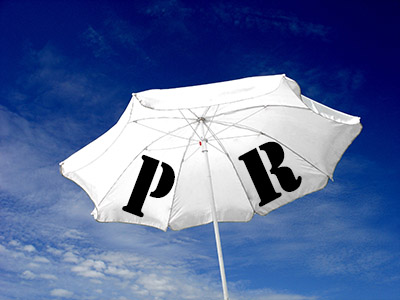
The true role of public relations in a company is often misunderstood, misinterpreted, misaligned, or just plain missing.
The last three companies I was employed by all got it wrong. They put PR under the marketing umbrella, with the head of PR often reporting to the vice president of marketing. Who in the world taught marketing to be such a control freak when it comes to PR?
It’s time to set PR free.
Why? Because PR, when operating to its fullest capacity, has company wide implications. It’s not just a promotional tool that should be steered by the head of marketing. PR should oversee how you communication to all your stakeholders (or publics) — not just your customers.
Ultimately, PR should act as the conscious of your company. It helps keep a company safe and preserve its reputation by (ideally) preventing any department (marketing, human resources, legal, accounting, etc.) from saying or doing anything that may be wrong, offensive, confusing or unethical.
That’s asking a lot of your PR department (which may also be called “corporate communications”), but that truly is its job.
Communications runs throughout your company’s daily operations. Management communicates with employees. Employees communicate with customers. Your company communicates with local and national news outlets. Company managers communicate with vendors. Advertising and marketing staff communicate with potential customers.
And vice versa on all those examples. Good public relations is all about establishing and maintaining mutually beneficial relationships between your organization and the publics on whom your success or failure depends.
Sometimes a company tasks its marketing department with its PR/communications needs.
This, at best, produces mixed results because —although there is common ground — upon closer examination, marketing and PR are very distinct disciplines. To avoid getting into too much detail, think of marketing as a “push” function and PR as a “pull/push/pull” function. Marketing’s main purpose is to sell. Whereas PR listens, communications, then listens again while soliciting feedback. Good PR thrives on mutually beneficial, two-way communication.
And that includes when working and communicating with the marketing folks. PR and marketing must sync up. We use essentially the same research as the basis for our strategies. And yes, there is some crossover when it comes to marketing communications and social media management.
Unfortunately, a 2012 PR News Salary Survey found only a third of PR pros reported directly to the CEO (see chart).
So, that being said, let’s redo your org chart. Make PR a separate department. Treat PR and marketing as equals. The head of each department should be part of your executive team and have a direct report to the president and/or CEO of your company.
Then PR can turn to marketing and say, “Marketing, you’re not the boss of me now.” Oh wait — you can’t say that if your job is to prevent any department from saying or doing anything that may be offensive, insensitive, divisive…


